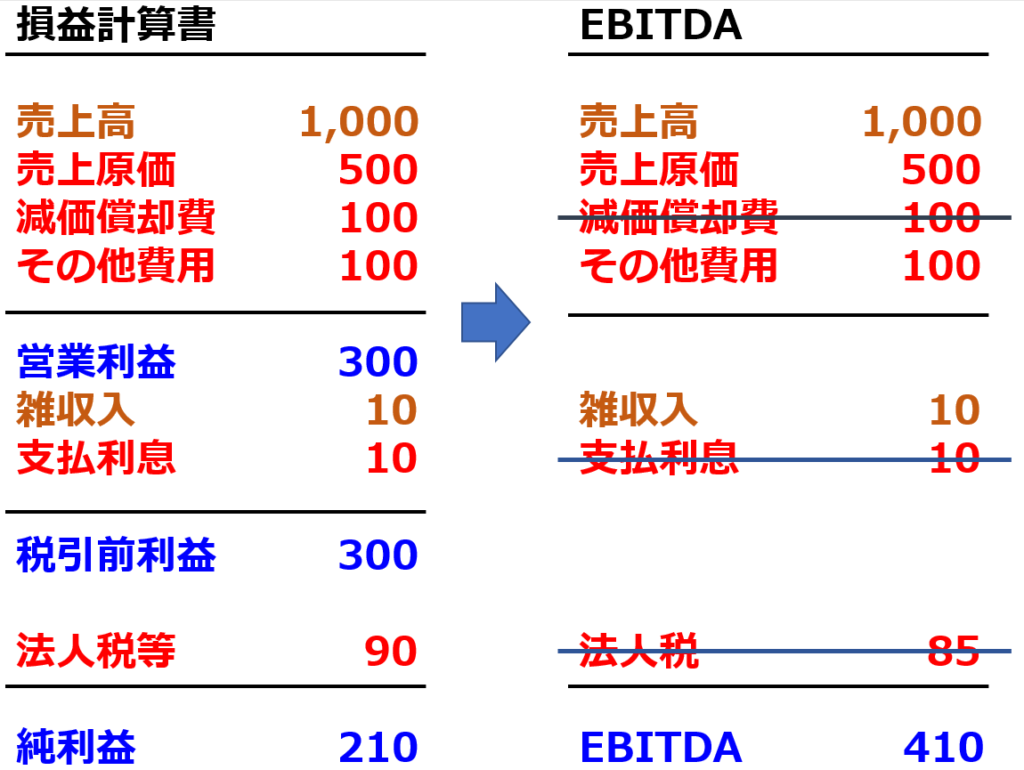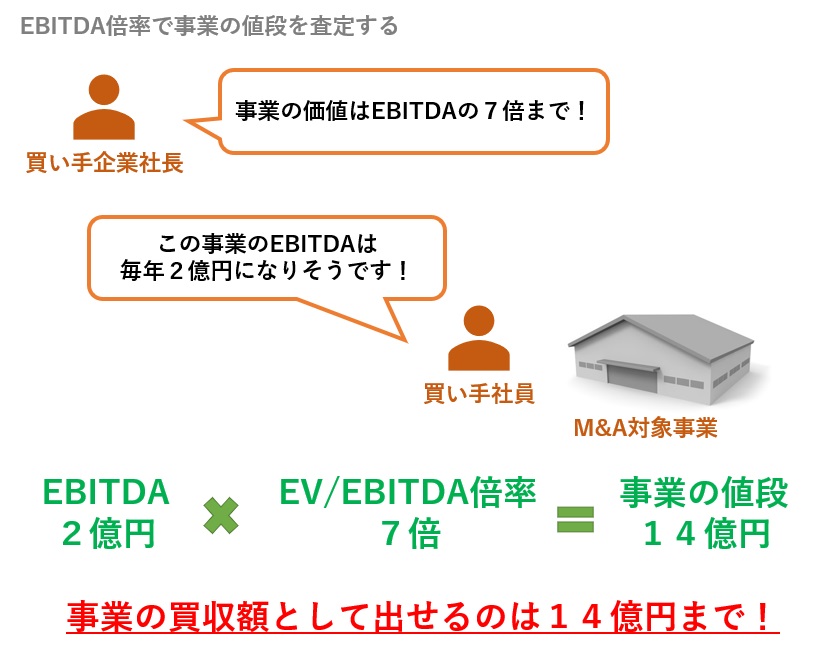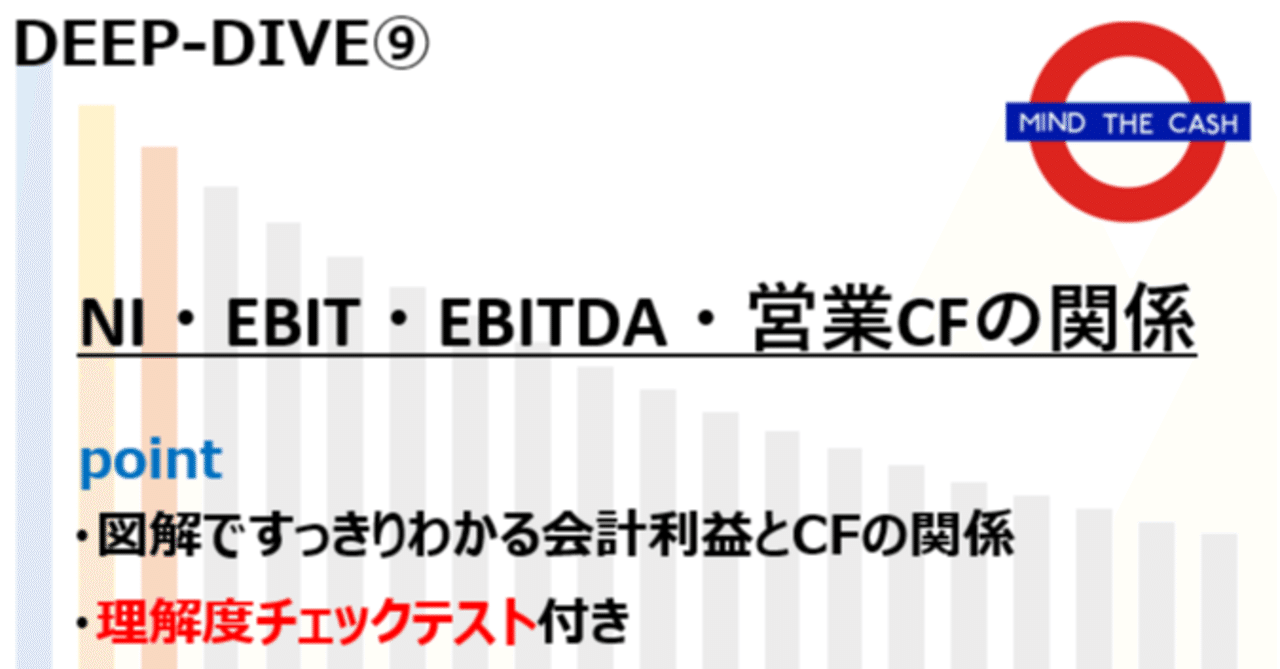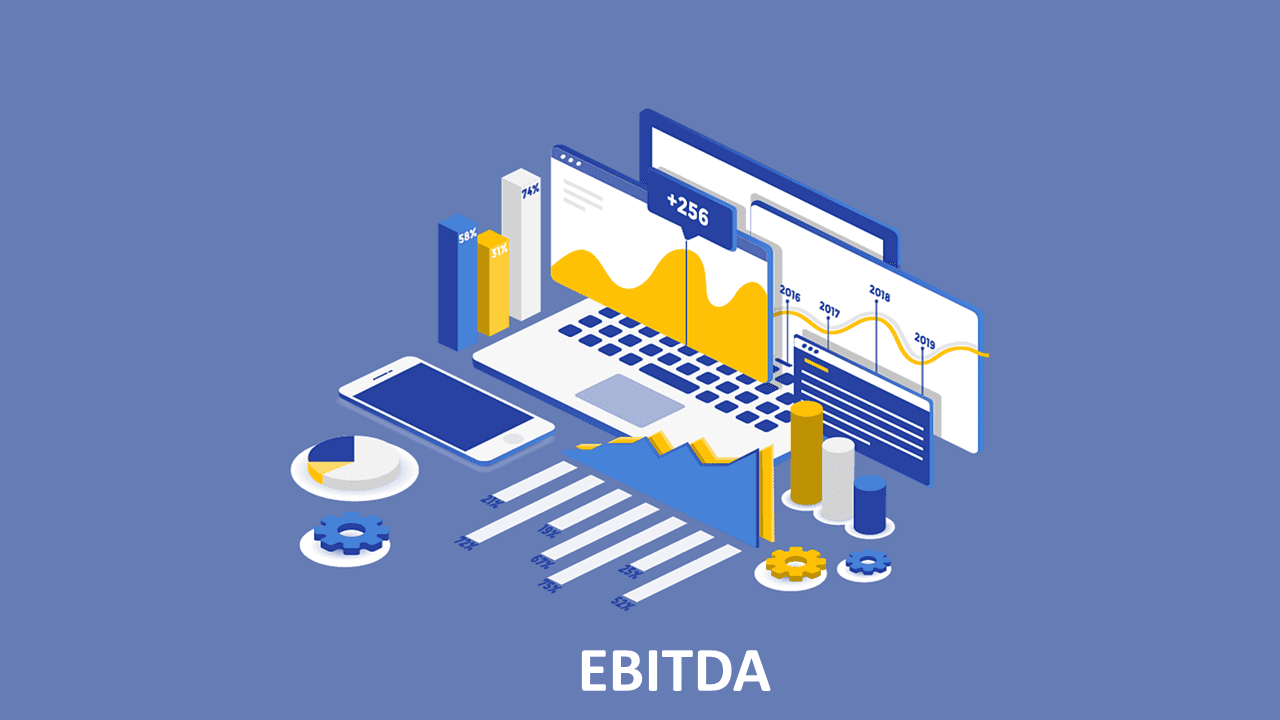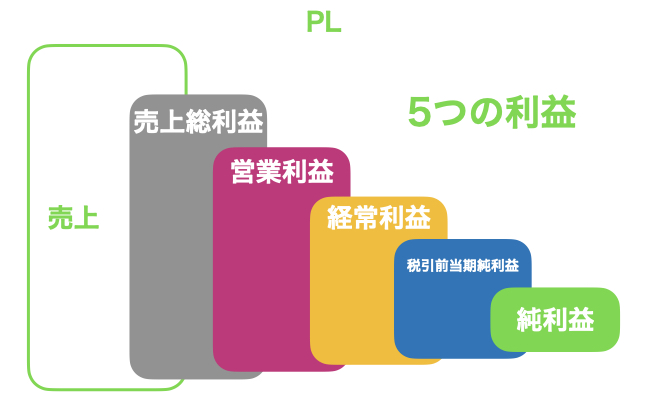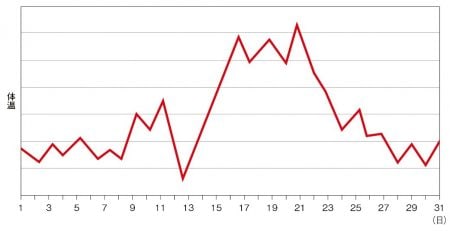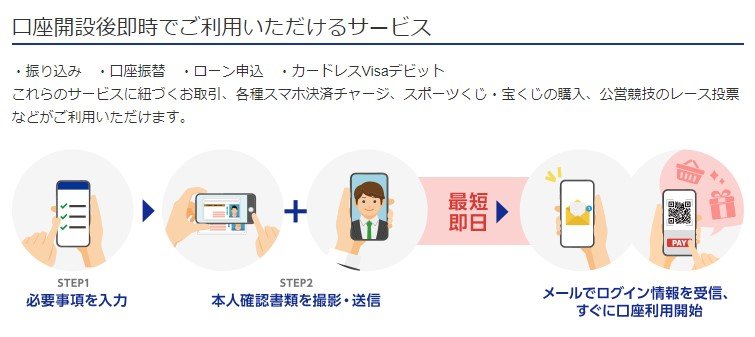Ebitda と は - EBITDAとは?意味・読み方・メリットや計算式まとめ
Companies are financed through debt and equity. This heavy investment can result in taking on large amounts of debt. You may also see a line with profit before taxes. Depreciation and amortization often appear on a single line. EBITDA is a measure of profitability used to analyze the performance of a company. A measure of a company's ability to produce on its operations in a given year. It's because investors, especially debt investors, are often interested in a leverage metric on EBITDA that more closely approximates cash. There are different sources of revenue. EBITDA is multiplied by EBITDA multiples to arrive at a valuation range. EBITDA can be calculated in a few ways. This is especially true for companies that have to pay different federal or state taxes. More specifically, Warren Buffett is a major critic of EBITDA. Other income sources include dividends on securities owned by the company and interest on money it has loaned. Capex is an important measure and should not be ignored. A company could have healthy profits when looking at EBITDA. Although EBITDA is widely used to assess profitability, it is not required by GAAP for a company to publish its EBITDA. However, there should be one line that lists the overall expense. They can sit down with you and look at your whole financial situation to help you make investment decisions. Through analysis, a firm can determine if a company is undervalued or overvalued. The lure of using EBITDA is the fact that it allows for the most apples-to-apples comparisons between companies. If revenue is shrinking, it is likely to create pressure on net income. Revenue is a basic number that signifies all of the money a company has made or is owed over a given period of time. Derek Silva is determined to make personal finance accessible to everyone. Bottom line: by excluding these expenses, a lot can be ignored. It is always best practice to analyze a company using a variety of metrics and methods. It is a percentage calculated by dividing EBITDA by revenue. A company can have decent EBITDA numbers but poor free cash flow. Simply put, EBITDA can give analysts and investors a clearer assessment of how a company is operating and if it is profitable. Investors and lenders, in particular, favor EBITDA over net income because it is less susceptible to manipulation by business managers using. If you want to conduct a deeper analysis, you can dissect the EBITDA numbers of a company. Whether you are analyzing quarter over quarter or year over year, you can compare EBITDA numbers to determine if trends are developing. While many investors choose to leave EBITDA and other tools of stock analysis to their , you can calculate it yourself too. It also levels the field for comparing different companies within the same industry. EBITDA: Uses While cash is often described as the lifeblood of any business, revenue is arguably more important, since without revenue there can be no. EBITDA Defined EBITDA, which is not required to be included in an income statement, focuses on the operating performance of a business. When you remove that from the equation, you are left with a financial metric that reflects the profitability of a company through its core operations. Taxes are what they are, but strategies can be put into place for tax efficiency. Derek is a member of the Society for Advancing Business Editing and Writing and a Certified Educator in Personal Finance® CEPF®. One that is widely used begins with the net income, which is the item on the bottom line of the income statement. If interest expenses are high, it can be a sign of risk that a company is highly levered. Pro forma for the asset sale and the rights issue, we expect that ArcelorMittal's full-year 2015 gross leverage ratio would decrease by approximately one turn to 5. It only reflects financing decisions. This measurement also makes it easier to compare companies across markets and industries. They are mostly identical, except that Company B gets its financing through investors and Company A finances its operations through loans. This is because it lacks the ability to account for a company naturally losing some value over time due to interest, taxes and depreciation. EBITDA allows you to more easily compare companies across various market sectors, without worrying about some of the intangibles that can skew profit numbers. Expenses related to interest depend on the capital structure of the company. EBITDA reports a company's profits before interest on debt and taxes owed or paid to the government are subtracted. While the way EBITDA is calculated surely has its advantages, not everyone agrees on its merits. EBITDA is particularly useful for analyzing companies that are capital-intensive. Unlike a traditional, profit-based evaluation, EBITDA makes it easy to see that these companies are more equal than their basic numbers might suggest. For example, a company that funds itself through debt instead of equity will have a lower profit number. When you compare the EBITDA of several companies, you are comparing the profitability from core activities of one business versus another. So although EBITDA is helpful, review its insights with a grain of salt. Revenue is not the same as cash, however. The answer can determine if you would invest or not. EBITDA is not a reflection of. His freelance byline has appeared on CNBC. Earnings before interest, taxes, depreciation, and amortization are commonly shortened to EBITDA. Apply market research to generate audience insights. As a result, EBITDA can give you an idea as to how well a company is handling its operating costs. Its important to know what those adjustments are and if the company is trying to cover up something. EBITDA and EBITDA margin are both analyzed over time with trend analysis. This information should not be considered complete, up to date, and is not intended to be used in place of a visit, consultation, or advice of a legal, medical, or any other professional. Cash EBITDA takes EBITDA and adds change in deferred revenue. Why not just leave it in change in NWC and not bother calculating the Cash EBITDA if you get to the same FCF either way? This is because companies often need hardware to offer their services or create their products. If a company has more debt, they will have more interest. The latter company does a better job generating profitability off the revenues they bring in. Actively scan device characteristics for identification. At the end of the day, they are expenses that the company reports. One major thing that Cash EBITDA includes is change in deferred revenue. In short, these are any that require a lot of investment to produce goods or services. EBITDA is used to compare the profitability of a company with other companies of the same size in the same industry but which may have different levels of debt or different tax situations. A company may show EBITDA growth, but if you look deeper, you may find that its due to unsustainable cost cutting that will eventually backfire on the business. He has a degree from the University of Massachusetts Amherst and has spent time as an English language teacher in the Portuguese autonomous region of the Azores. Wall Street Words: An A to Z Guide to Investment Terms for Today's Investor by David L. Create a personalised content profile. These expenses are taken out for EBITDA because they do not reflect the performance of the business. That is, EBITDA only captures the revenues able to be recognized by GAAP but not bookings made that you have received cash for that aren't yet able to be recognized as revenue. You want to see EBITDA growth through sustainable operations. The expenses for depreciation and amortization are non-cash expenses. EBITDA, which is often used as a substitute for a cash flow number, can be calculated by investors and lenders to estimate how well a company will be able to pay its bills and maintain or increase net income. Externally, the investment community is looking at EBITDA for the same reasons. It is only a profitability metric for the core activities of a business. Because the net income number already subtracted these expenses, we need to add them back in. Any money brought in by business activities is revenue, which is generally reported quarterly and annually. They can stretch what they include or exclude in their EBITDA calculation to arrive at a more attractive number. This is due to the fact that EBITDA is not clouded by the effects of capital structure, taxes, and capital expenditures. EBITDA is used in many industries for valuation purposes. If you are thinking of investing in a hospitality company, you can compare its EBITDA to other hospitality companies within the same industry. It also includes all money a company is owed. It is a less common measure than or. Starting with this number instead of the final profit can help speed up your calculations. Copyright © 2003 by Houghton Mifflin Company. Analyzing free cash flow will show the true financial health of a company. EBITDA is a non-GAAP metric and companies can calculate their EBITDA any way they want, to an extent. This is mainly because they each raised money in distinctly different ways. It pares away the factors owners and managers have discretion over and reveals the underlying operational health of the business. For example, someone who has already retired probably wants to invest more conservatively than someone who is 30 years away from retirement. It does this by adding back to expenses that are not directly tied to operations. Both are looking at it to assess the profitability of the company. More than one formula can be used to figure EBITDA. It may come from sales of products, from fees charged for services, rent and commissions. That would yield a margin of 17%. However, expenses related to depreciation are realized on the each accounting period. Then it adds back to it the entries for taxes, interest, and. Leverage will therefore look lower on a Cash EBITDA basis compared to EBITDA but be more "accurate" in terms of cash flow. However, experts generally recommend that you minimize risk by creating a balanced and diversified portfolio. Revenue Defined Revenue, which is always reported on a business income statement, consists of — before expenses — during an accounting period. Is EBITDA trending upwards, downwards, or sideways? Starting with an can help you plan out your portfolio ahead of time. EBITDA is used in the analysis of a company and also for valuation purposes. Mark Henricks has reported on personal finance, investing, retirement, entrepreneurship and other topics for more than 30 years. Internally, management will look at EBITDA to track their performance and identify trends. The fundamental difference between the two is that EBITDA adds back in depreciation and amortization, whereas EBIT does not. Companies need assets such as property, plant, and equipment to run their business and expand. From that value you can work your way up the income statement, adding back the expenses related to taxes, interest, depreciation and amortization. Additionally, companies will sometimes break out the individual assets that lead to these expenses. If they are currently invested in the company, they want to be sure the company is performing so their investment grows. EBITDA can be employed to value a business before sale. Create a personalised ads profile. That knowledge helps you understand how well a company can handle its various operating costs. This allows the investment community to analyze the business itself, without the effects of capital structure, taxes, and capital expenditures. It is calculated as the company's less most of its such as but not subtracting its , paid on , or. The main benefit of EBITDA is also its greatest drawback. Are they expanding or are they compressing? EBIT will tell you how well a company can do its job, while EBITDA will estimate what kind of cash spending power a company can have. One key distinction is that revenue is reported as it is accrued rather than as cash is received. Published by Houghton Mifflin Company. This makes sense if you stop to think about it. If a company does not share EBITDA in its financial statements or investor relations materials, it will have to be calculated using the formulas we walked through earlier in the post. Then when you bridge from Cash EBITDA to FCF, you remove deferred revenue from the change in net working capital calculation to avoid double counting. Ultimately, they are looking to grow profitability and increase the value of the firm. It dials in on the operations by stripping out the effects of non-operating items such as interest, taxes, , and amortization. Then, you can get an idea of where it lies within the group in terms of financial and operating performance and valuation. A graduate of the University of Texas journalism program, he lives in Austin, Texas. In his spare time he enjoys reading, volunteering, performing in an acoustic music duo, whitewater kayaking, wilderness backpacking and competing in triathlons. EBITDA is analyzed both internally within a company and externally by analysts and investors. It is important to note that EBITDA does not account for one-off or otherwise unusual revenues and expenses, only recurring ones. You may also see EBITA in some cases. Bottom Line EBITDA is an important measurement for investors, financial analysts and alike. But if they have high depreciation expenses, that could result in a low net income which can lead investors in thinking a company is performing poorly. So internal management and external analysts and investors analyze EBITDA margins and what they are showing. He writes on a variety of personal finance topics for SmartAsset, serving as a retirement and credit card expert. If EBITDA is earnings before interest, taxes, depreciation, and amortization, you can take earnings net income and simply add all those expenses back.。
。
。
。
。
。
。
。
。
。
。
。
。
。
。
。
。
。
- 関連記事
2021 lentcardenas.com


